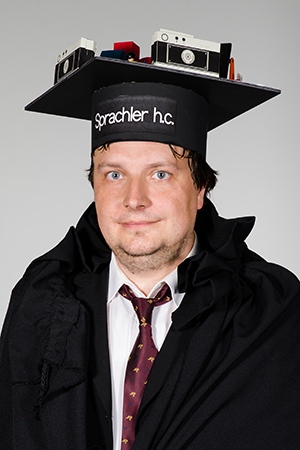Stefan Wenhardt
Ansichtenauswahl für die 3-D-Rekonstruktion statischer Szenen
Abstract
The problem of 3-D reconstruction is one of the main topics in computer vision. If certain imaging parameters can be modified to improve the 3-D reconstruction result, the question how to select this parameters belongs to a domain called active vision. The active parameters in our case are the focal length of the camera, which can be controlled by a zoom lens, and the pose, i. e. translation and rotation of the camera. The camera is mounted on a robot, so the position of the camera can be controlled. Usually, active vision for 3-D reconstruction means either scene exploration or most accurate estimation of the 3-D structure of an object. Of course, there are approaches trying to find a trade-off of the two aspects. This thesis focuses only on the aspect of high accurate estimates. For this purpose feature points are extracted from the images to estimate their 3-D coordinates. Here two different approaches are developed and evaluated: a geometric approach for stereo camera systems and a probabilistic approach. The geometric approach considers only stereo camera systems, i. e. systems which consist of exactly two cameras. The influence of the active parameters (translation, rotation and focal length) are evaluated and, if possible, analytically proven. The probabilistic approach determines the next best view, to increase the accuracy of the current estimate. Therefore it is necessary to describe the problem of 3-D reconstruction as a state estimation problem. The state estimation is solved by the extended Kalman filter. So, it is possible to improve the current state estimate of the 3-D coordinates by additional observations. This thesis derives a modification of the Kalman filter,which allows to reduce the calculation complexity drastically. For this modification only some simple assumptions are necessary, but it is discussed, why these assumptions are meaningful in the application of 3-D reconstruction. This modification is exact, i. e. there is no approximation required. A 3-D point to be reconstructed may be invisible, e. g. it is occluded by the object itself or its projection is outside of the field of view of the camera. Therefore, the next best view planning has to consider whether the point is visible or not from a certain view. We will show how the probability of visibility of a 3-D point can be calculated and further, how we can integrate the visibility issue into the closedform optimization criteria for the next best view planning. Another aspect of next best view planning is to move the camera to the desired position. Therefore, the question is, which position is reachable by the used robot device the camera is mounted on. In former publications, this aspect is either ignored or it is assumed the camera canmove only on a (part-)sphere around the object. But this thesis describes the reachable workspace by the Denavit-Hartenberg matrix. This allows to consider the complete workspace of the used robot in the next best view planning, without any unnecessary limitation to a (part-)sphere.
